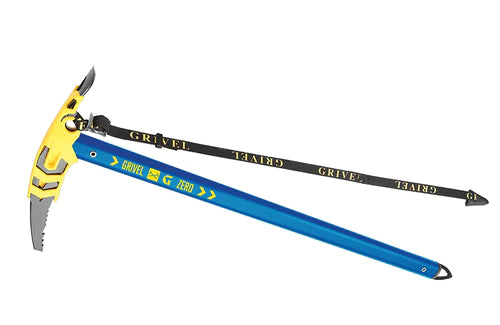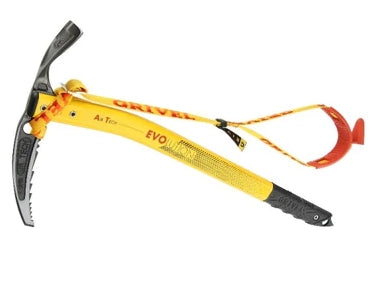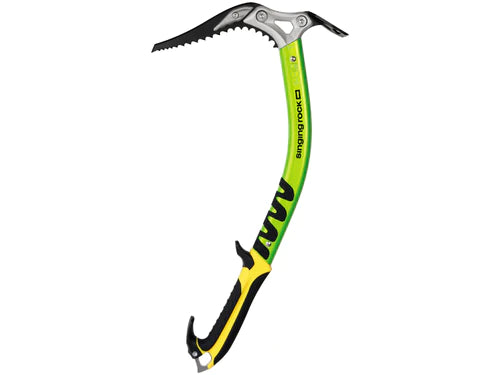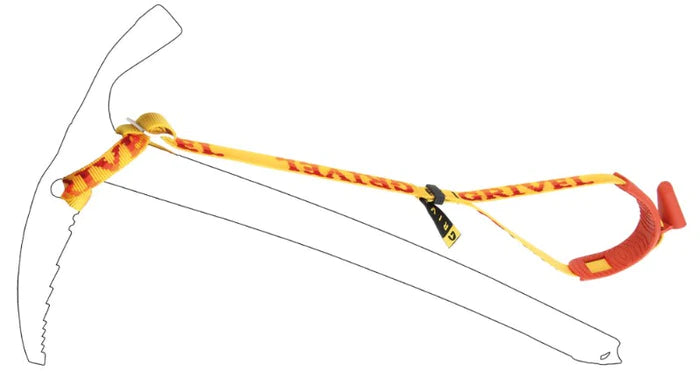Which type of ice axe should you buy?
We cover all styles in this Gearshop product overview.
Article by Mark Watson
An ice axe is to a mountaineer what a hammer is to a builder, or sharp knife to a chef: a fundamental tool of the trade that you rely on day to day and would be lost without. But like chefs’ knives, ice axes come in many different styles and lengths – so many that you may well be left wondering where to start if you are buying one for the first time.
When I first learned to use an ice axe as a boy they were vastly different tools: long, straight shafted, made from laminated bamboo or alloy, and with one kind of pick; curved. These days, like a lot of outdoor equipment, ices axes form a highly evolved class of mountaineers’ equipment and have become increasingly specialised to suit different kinds of alpine activity, from a snowy walk in the hills, to dry tooling on overhanging cliffs.
While a classic walking axe is still the mainstay of the ice axe universe, it’s common for very active climbers to have three to four different styles of axe, and even occasional climbers to own a couple of styles, because each one performs best in a specific climbing style, terrain type, or season.
We’ve written this article to help you buy the right ice axe for the type of alpine activity you’re intending to do.
Walking Ice Axes
This is the category of ice axe that most people would typically think of when the word ice axe is mentioned, and has some crossover into alpine axes.
A typical walking axe will feature a straight, clean shaft, with no hand rest; a simple spike/ferrule at the tip of the shaft, for plunging into snow; a basic curved pick with teeth and a generous adze for step cutting.
Walking axes are available in different lengths (50–70cm), so that the axe provides a balance aid for the user when they’re traversing snow slopes and to ensure it’s not awkward or cumbersome to use. An axe that’s too short will throw you off balance when you push the spike into the snow, or cut steps, while an axe that’s too long will be difficult for you to plunge into the snow, especially on steeper slopes.
There is some variation in features in walking axes, making some models suitable as alpine axes, while others are best only on moderate snow and ice slopes. A slight curve in the shaft, or an adjustable hand rest are crossover features to look for that suit steeper alpine climbing.
If you’re looking to do some winter tramping and easy summer mountaineering (up to Grade 2) and glacier crossings then a walking axe is most likely what you’re after. Axes that are heavier and have a generous adze will be best for step cutting, or you might look at a super light model if you anticipate only occasional step cutting or pick use, and want to make weight savings while still having a functional ice axe.
To size a walking axe, hold the head of the axe in a standard walking position (adze forward), hanging straight down beside your leg. Stand straight, with your shoulders relaxed. The spike of the axe should be approximately equal with your ankle, at the longest, and just a few centimetres above it at the shortest. Generally, most climbers should aim for the spike to touch the ground when on terrain of 25–40 degrees, so that the axe provides a third point of contact for maintaining balance.
Alpine Ice Axes
Alpine axes bear many similarities to walking axes but tend to be shorter and are more technically oriented for climbing steeper alpine terrain, while still being effective for self arrest.
The length of an alpine axe will usually be 50–60cm long, with the shorter length making the axe easier to swing when climbing with the pick, but an alpine axe should still be sized to be suitable for providing balance while walking on moderate slopes.
Alpine axes will usually have a slightly curved shaft, which provides clearance for the axe shaft and your fingers when you are swinging the axe into ice, and also allows your fingers to stay away from the surface when you are punching the axes into snow while holding the shaft below the head. Curved shafts enable more leverage when you self arrest too, but note that the more curve in the shaft, the harder it will be to plunge into snow.
Another common feature in an alpine axe is a reverse curved pick, which is best for steep and technical climbing because they both penetrate ice better and are easier to remove from ice. The most versatile alpine axes have reverse curve picks, but if you don’t anticipate much steep climbing, then a curved pick is easier to hold for walking, and provides a more positive self arrest. Some alpine axes can be bought as axe and hammer pairs, and may have interchangeable picks.
If you anticipate strapping the axe to a pack for alpine rock climbing, or bush bashing, you’ll have more clearance from obstacles with a short alpine axe.
Technical Ice Axes
Otherwise known as ‘ice tools’ technical axes are bought and used as a pair. They’re designed to excel on steep névé and ice, including mixed climbing. The typical features of a technical axe are a pronounced curve in the shaft, and aggressive reversed curve pick, an ergonomic handgrip at the bottom of the shaft, and two hand rest positions, so you can jog your hand to a higher position on the shaft for better reach from a pick placement while technical climbing, or hold the axe for punching into steep firm snow.
These tools usually have interchangeable picks, for ice or mixed climbing, and so that they can be replaced if broken or worn down. The adze will usually be minimal and is more for scraping ice off ledges, than for digging, as you would with walking or alpine axes. They are commonly used leashless, but might be attached to the climber’s harness with an elasticated lanyard.
Technical ice axes are not optimised for moderate climbing or for self arrest, because they only come in one length, and the radical curve and hand rest make them difficult to plunge into snow by the shaft.
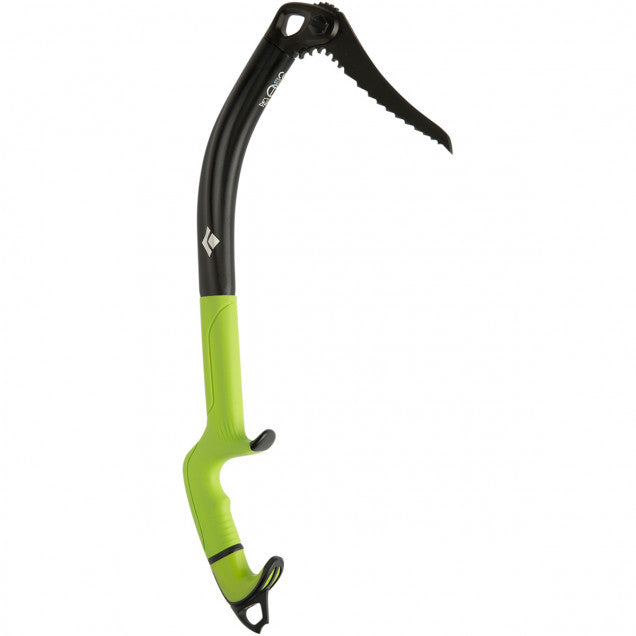
Offset (Ice and Drytooling) Ice Axes
These specialised tools are designed only for the steepest ice, mixed and dry tooling, and do not have features required for general mountaineering. The lowest section of the shaft is offset into an anatomic handle, for a comfortable wrist position which provides the optimum swing, and also stability for hooking on rock. The hand rests are prominent and comfortable and like technical ice axes, they’re used leashless.
These tools don’t generally feature adzes, because they can strike you in the face if the pick pops off a placement, but there is sometimes a small hammer head.
Leashes
Wrist leashes
Leashes are worn so that you don’t lose the axe if you let go of it, and can help you retain your grip on the axe in the event of a self arrest. Dropping an axe on a mountainside is both an expensive and potentially very dangerous mistake.
Leashes can be as simple as a 6mm cord wrist loop, tied to the head of the axe, or webbing with an adjustable wrist loop, through to anatomically shaped, to support the wrist comfortably while ice climbing. The best leashes are adjustable, so that you can accommodate different sizes of glove.

Spring leashes/lanyards
These leashes work best paired with technical and offset tools that have prominent hand rests. Spring leashes attach to your harness belay loop and directly to the carabiner hole in the spike of the tool. They’re designed so you don’t lose a tool if you drop it, not for hanging from the tool on. Climbing without wrist leashes allows a wider variety of hand placements on the tools themselves which opens a greater repertoire of moves for really technical climbing.
There are also single strand versions for use with walking, alpine and technical axes, which saves you swapping a wrist leash from hand to hand as you change walking direction.


